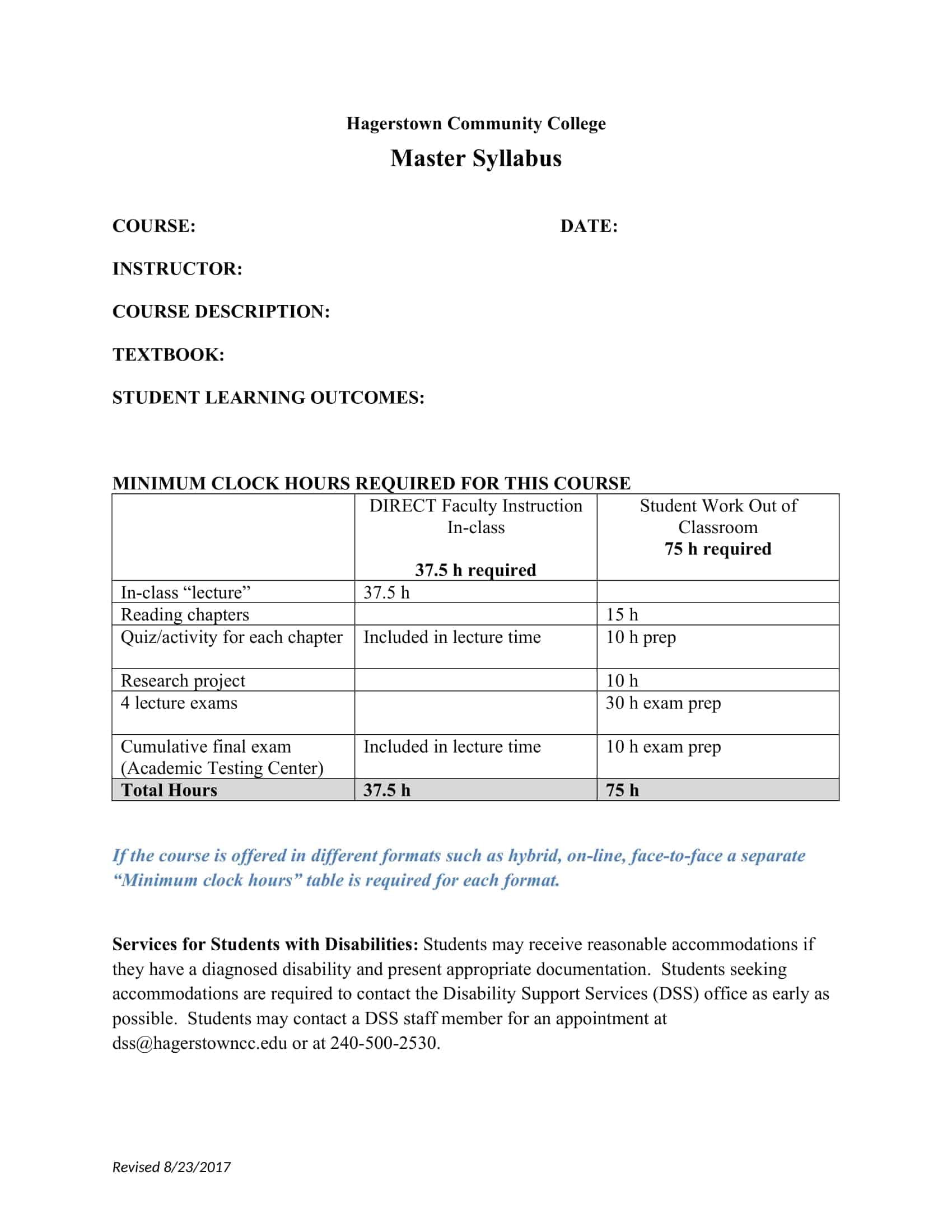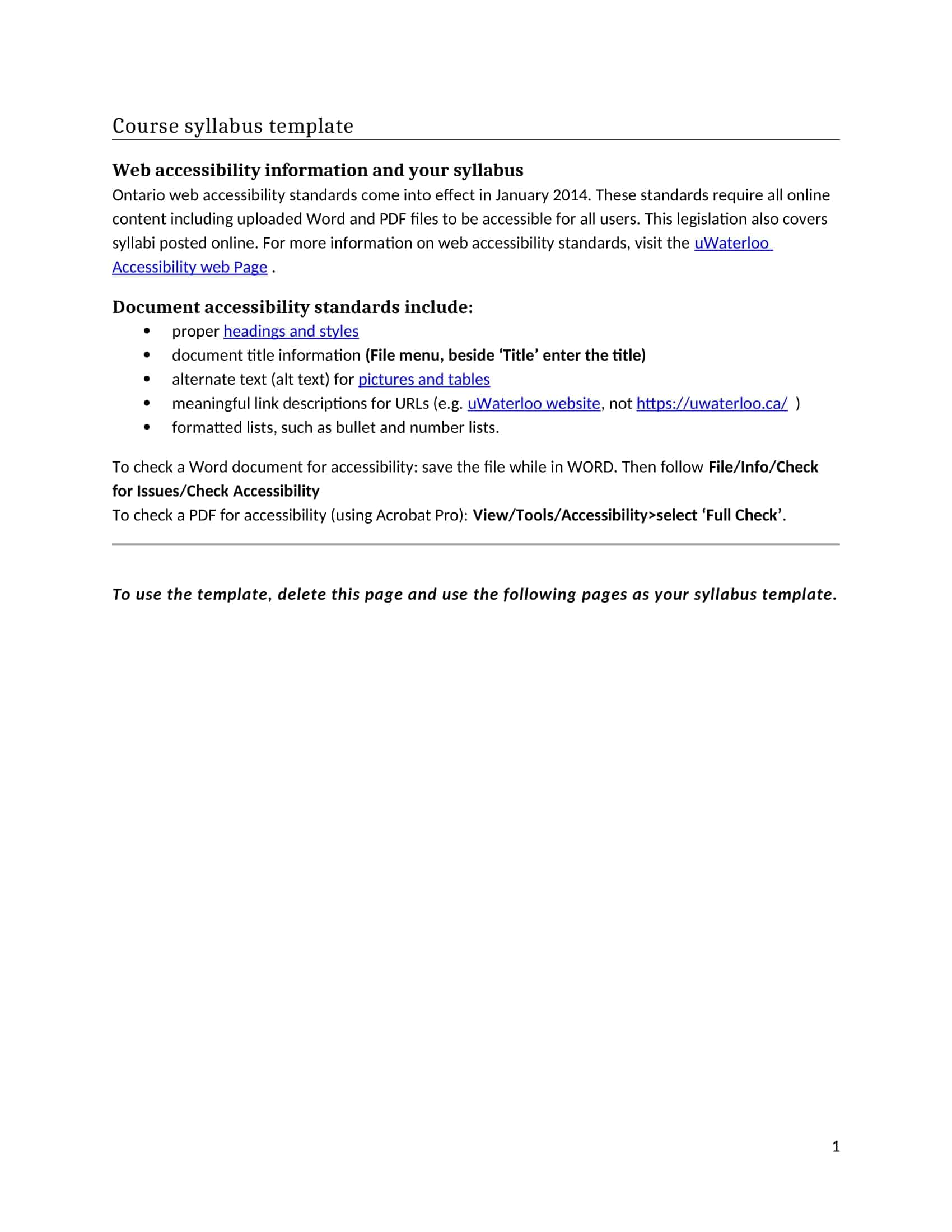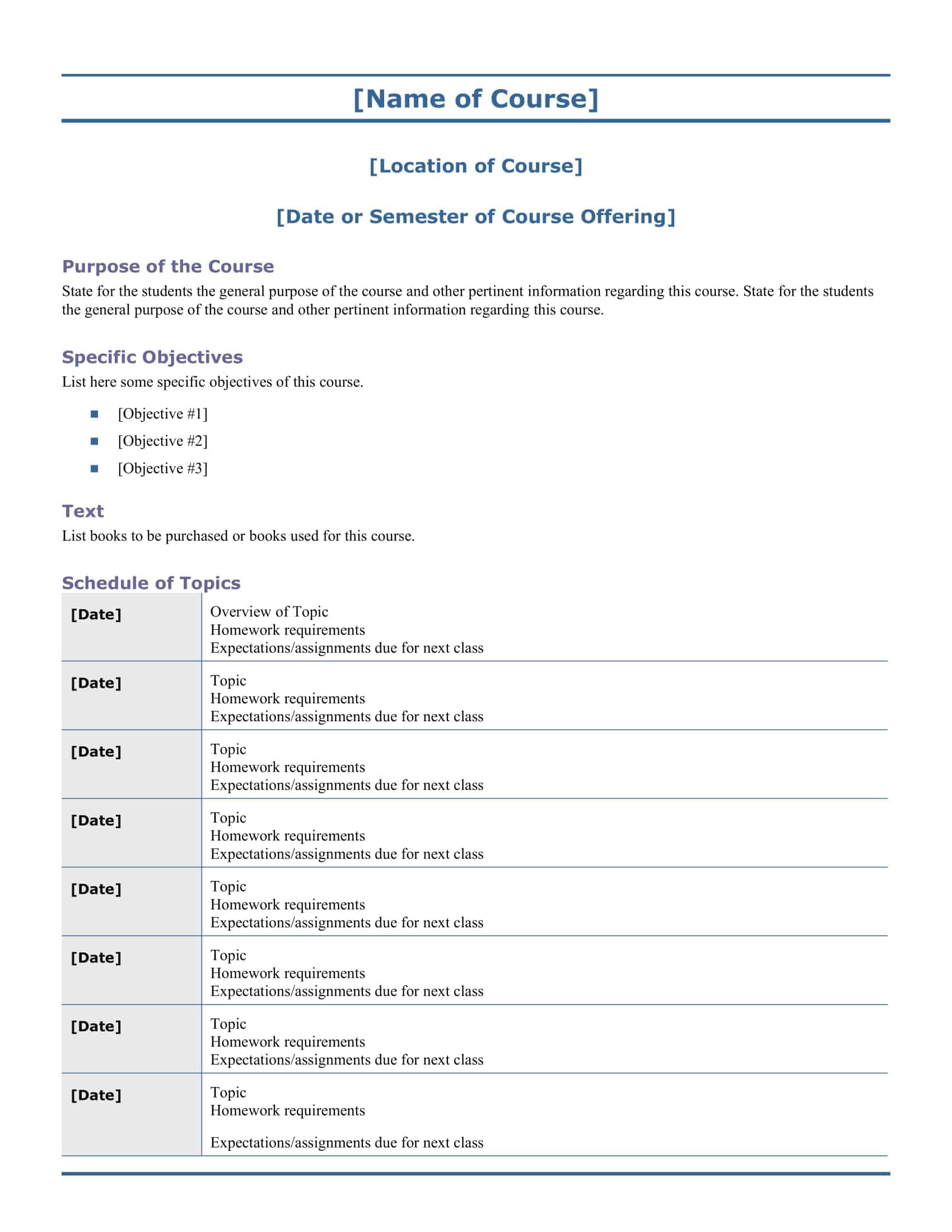When you craft a syllabus template, you’re essentially building a bridge between your educational goals and your students’ understanding. This template, often created using versatile tools like Microsoft Word, Google Docs, or even dynamic wiki platforms like Type Calendar, serves as a multifunctional platform for learning.
Table of Contents
What Is a Syllabus Template?

Imagine this template as a canvas where you paint the broader picture of your course. It includes essential details like the course name, your information as the instructor, the course number, and contact methods for reaching out to you. But it goes beyond these basics. This template is a beacon for students, helping them navigate through the learning process. It outlines what they need to learn, setting clear expectations and benchmarks.
Moreover, a well-crafted syllabus template is not just a list of topics or readings; it’s a narrative of your course. It tells a story about what students will explore, learn, and achieve. By incorporating additional explanations and insights into the syllabus, you’re not just listing out concepts; you’re providing a contextual framework that enhances understanding.
In essence, a syllabus template isn’t just a document – it’s a proactive educational strategy. It’s about making the unknown known, clarifying the complex, and lighting the path for your students’ academic journey. By having this tool at your disposal, you’re ensuring that your students are not only keeping up with the curriculum but are also engaged and empowered to ask the right questions and delve deeper into the subject matter.
Syllabus Templates
Set clear expectations and provide valuable information to students with our comprehensive collection of Syllabus Templates. These customizable and printable templates offer a structured framework for creating informative and well-organized syllabi for your courses. Our templates cover essential sections such as course objectives, learning outcomes, assessment methods, grading criteria, required materials, and course policies.
By utilizing our Syllabus Templates, you can communicate course expectations, outline the curriculum, and establish a roadmap for student success. With visually appealing designs and user-friendly layouts, our templates help you create syllabi that are engaging and accessible to students. Enhance the learning experience, promote accountability, and foster a positive classroom environment with our Syllabus Templates. Download now and design comprehensive syllabi that set the stage for a successful academic journey.
FAQs
How do you structure a syllabus?
A syllabus is typically structured with the course name, instructor information, course description, learning outcomes, schedule of topics/readings, assignments, grading policy, course policies, and resources/materials listed in order. A table format helps organize key information.
Does Microsoft Word have a syllabus template?
Yes, Microsoft Word provides several free, downloadable syllabus templates that contain headings, tables, and example texts to help build a comprehensive course syllabus quickly. The templates can be customized to fit your specific course needs.
What all should a syllabus include?
A syllabus should include the course title, instructor info, description, learning goals, schedule, assignments, grading policy, attendance/late policies, classroom expectations, and course resources or materials. Additional elements could include office hours, an academic integrity statement, and disability services/accessibility information.
How do I create my own syllabus?
To create your own syllabus:
- List the course name, number, term, meeting times
- Add instructor contact information
- Write a course overview and learning objectives
- Make a schedule of weekly topics, readings, and assignments
- Include assignment due dates, point values, and grading scale
- State policies on attendance, late work, etc.
- Provide information for accessing course materials















































![Free Printable Roommate Agreement Templates [Word, PDF] 1 Roommate Agreement](https://www.typecalendar.com/wp-content/uploads/2023/06/Roommate-Agreement-150x150.jpg)
![Free Printable Credit Card Authorization Form Templates [PDF, Word, Excel] 2 Credit Card Authorization Form](https://www.typecalendar.com/wp-content/uploads/2023/06/Credit-Card-Authorization-Form-150x150.jpg)
![Free Printable Stock Ledger Templates [Excel,PDF, Word] 3 Stock Ledger](https://www.typecalendar.com/wp-content/uploads/2023/08/Stock-Ledger-150x150.jpg)
